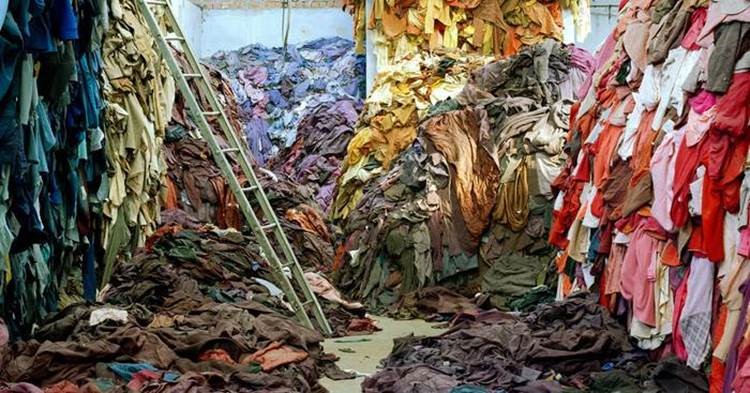The Permanent Effects of Fast Fashion
May 4, 2022
Fast Fashion is defined as the design, manufacturing and marketing method focused on rapidly producing high volumes of clothing. Fast fashion has numerous implications that the fashion industry has attempted to cover up to continue the constant consumption of clothing.
It reaches far beyond the apparel business, harming the environment, the economy, even modern ethics. The Fast Company found that brands like Zara, H&M and Shein create 53 tons of clothing annually and use unregulated slave labor. All of this is ignored in favor of accessibility and lowered costs.
Ethics have been dismissed as people refuse to acknowledge the situation of human slaves in fast fashion. Workers are underfed, underpaid and overall treated horribly.
In 2013, an eight story building housing a clothing manufacturing business collapsed. The collapse of the Rana Plaza resulted in the death of 1,134 garment factory workers and the injury of around 2,500.
Many textile companies hire children, as they require low-skilled labor and are seen as obedient workers. There is no supervision or unions who can help these children receive improved working conditions. They are easy targets, because they are low skilled workers without anyone looking out for them. Employers are able to get away with this as the clothing supply chain is extremely complex and the companies cannot control every stage of production. The International Labor Organization found that 170 million children are engaged in child labor. This totals out to be 11% of the global population of children engaged in modern day slavery.
Fast fashion completely disregards sustainability and any moderating environmental practices. Brands such as Boohoo use toxic pesticides as well as harmful dyes that destroy water supplies. The Environmental Health Journal found that conventional dyeing releases metals and toxicants into local water sources, impacting the health of animals and residents.
Each year in the U.S. alone, 11 million tons of clothing are thrown out, but the chemicals found in the fabrics prevent them from breaking down. They sit in the landfills and release toxins into the air. The carbon footprint from fast fashion is increasing rapidly, reaching levels rivaling air travel and the oil industry.
The economy also relies on the fast fashion industry. It now is responsible for 4.78% of the economy and is expected to rise to 5.91% in the next three years. It also employs 300 million people all across the globe. With its large contribution to the world economy, it is not simple to “stop” fast fashion. It has established itself as an employer and distributor and is on the rise. Americans now buy five times more clothing than they did in 1980. This is a result of microtrends, which are created to encourage consumers to buy more clothing to fit into the current “in” style. The traditional fashion seasons were 2-4 times a year. They have now been increased to 52 seasons annually. Brands knowingly make clothing more disposable, aware of the fact that they will have a shorter lifespan in a consumer’s closet.
Fast fashion isn’t limited to lower quality garments, it has a chokehold on the modern economy, employs child laborers and destroys the environment. Though brands try to entice consumers with a larger variety of clothing or prices that seem “too good to be true”, the effects do not outweigh the benefits. Choosing to thrift or support slow fashion brands is truly a modern victory. Resisting the pull of a micro trend and supporting sustainable, lasting products is crucial in the stop of fast fashion.
































